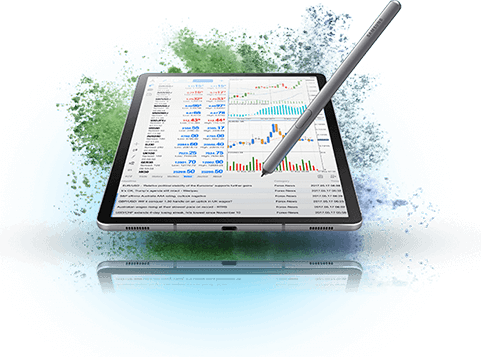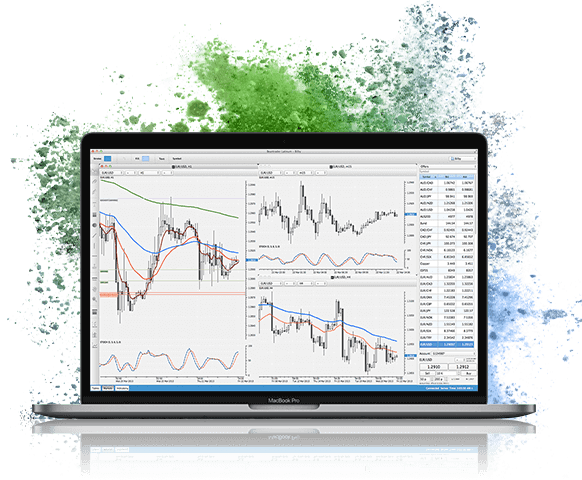

MetaTrader 5 (MT5) is one of the most popular platforms used for forex algorithmic trading, offering robust tools for both manual and automated trading. In MT5, traders can develop, backtest, and deploy custom forex trading algorithms using the MQL5 programming language, a powerful scripting language specifically designed for trading automation. The platform supports Expert Advisors (EAs), which are automated trading robots that can execute trades, manage orders, and even perform complex strategies without human intervention.


Advancements in technology have changed the forex trading landscape forever. Online trading platforms have connected global traders, enhancing transparency, liquidity and trade execution speeds. While 30 years ago, the forex market was dominated by big banks and institutional investors, today, retail traders are a huge part of the daily transactions in this market. In the last decade, there has been a 40% surge in daily forex trading volumes, with daily global forex turnover hitting the $6.6 trillion mark in January 2020. The foreign exchange market is now the biggest financial market in the world – dwarfing all of the world’s stock markets combined.
Another significant development has been the emergence of algorithmic trading, an effective tool to increase convenience and efficiency in forex trading. Forex algorithmic trading or algo-trading, at its core, is trading based on an algorithm or set of computer programs that include a specific set of rules to complete a particular task.
To successfully use algo trading, market participants focus on specific strategies, trading speed and access to real-time price quotes.
Algorithmic trading strategies can be used to reduce traders’ risk exposure. Many traders choose to engage in automated rebalancing of portfolios to hedge their exposure to market risk, exchange rate risk and volatility risk.
Based on statistical analysis of historical data, the system can identify trading opportunities and long-term trends. Past market data is given preference over current market data.
Trades are executed at increased speed to reduce market exposure and build long-term profitability. Forex scalpers often use high-frequency trading strategies to enter and exit multiple positions in a day. They are able to take advantage of incremental price changes in a currency pair within milliseconds.
Traders can connect to multiple trading platforms at a lower cost and higher speed. They have direct access to multiple liquidity providers and access to the best bid/ask quotes for currency pairs. Direct data feed from such liquidity providers or exchanges reduces latency in trading.

To successfully use algo trading, market participants focus on specific strategies, trading speed and access to real-time price quotes.
Algorithmic trading strategies can be used to reduce traders’ risk exposure. Many traders choose to engage in automated rebalancing of portfolios to hedge their exposure to market risk, exchange rate risk and volatility risk.
Based on statistical analysis of historical data, the system can identify trading opportunities and long-term trends. Past market data is given preference over current market data.
Trades are executed at increased speed to reduce market exposure and build long-term profitability. Forex scalpers often use high-frequency trading strategies to enter and exit multiple positions in a day. They are able to take advantage of incremental price changes in a currency pair within milliseconds.
Traders can connect to multiple trading platforms at a lower cost and higher speed. They have direct access to multiple liquidity providers and access to the best bid/ask quotes for currency pairs. Direct data feed from such liquidity providers or exchanges reduces latency in trading.

Algorithmic trading can enable traders to implement a wide range of strategies in the forex market.
The simplest trading strategy to deploy through automated trading is trend following. The system follows market trends and when a pre-determined set of conditions is fulfilled by the technical indicators, buy or sell orders are placed accordingly. Both current and previous market trends can be compared by the system to identify trading opportunities.
High-frequency trading or HFT has recently become more popular in the forex world. Aggressive short-term strategies help traders to take advantage of price volatility in currency pairs. Buy and sell signals are generated and trades are executed in a matter of milliseconds. Apart from scalping strategies, arbitrage strategies are also executed. Traders are able to complete thousands of trades per day, helping them to score a favourable win-loss ratio.
Forex market volatility is sparked by important news releases, economic data releases and geo-political developments. There are news-based automated trading strategies that are connected to news wires. Based on the difference between market consensus regarding economic indicators and the actual figures, the system can generate trade signals. Traders can further add technical indicators, based specific parametres as well. This helps them to take advantage of sudden market reversals, often seen after the release of reports like the US NFP (Non-Farm Payroll Report).
News sentiment and market sentiment data have been used by hedge funds for a long time to devise sophisticated algorithms to place trades. With the help of powerful technologies like AI (Artificial Intelligence) and NLP (Natural Language Processing), systems can now sift through millions of news articles, social media commentaries, opinion articles and analyst reports to identify and predict market sentiment. Market tops and bottoms can be predicted using commercial and non-commercial positioning.
There are a number of mathematical models, such as the delta-neutral trading strategy, that are proven to be effective in trading with multiple positions that offset positive and negative deltas. These deltas are ratios that compare the change in the price of an asset to the corresponding change in price of its derivative, such as a future or option. The goal is to have the overall delta of all the open positions balance out and equal zero. Obviously, this is best done using an algorithm that can easily calculate these values and place multiple orders at the same time.
A mean reversion strategy is based on the idea that currency prices ultimately revert to their mean values or average. “Pairs trading” is one way this strategy is used, where traders try to take advantage of spreads between two correlated currency pairs. Technical indicators like the RSI, Money Flow and Bollinger Bands can help identify overbought and oversold levels, which can then help traders enter and exit mean reversion trades. Algorithmic trading strategies based on mean reversion typically calculate the average asset prices through historical data, and then trades are based on the current prices reverting to this average price in the near future.
There are a number of benefits to algorithmic trading in the forex trading markets:

309, Sunrise Commercial Complex, Lajamni Chowk, Mota Varachha, Surat, Gujarat 394105
AL Tawash Center, 776W+9X8 – Sharaf DG Metro Footbridge – Al Fahidi – Dubai – United Arab Emirates
Copyright © 2025 Kautilyam. Designed and Developed by Kautilyam.
309, Sunrise Commercial Complex, Lajamni Chowk, Mota Varachha, Surat, Gujarat 394105
311, ABC, Opposite Torrent Power Sub Station, SP Ring Rd, Nikol, Ahmedabad, Gujarat 382350
AL Tawash Center, 776W+9X8 – Sharaf DG Metro Footbridge – Al Fahidi – Dubai – United Arab Emirates
Copyright © 2025 Kautilyam. Designed and Developed by Kautilyam.